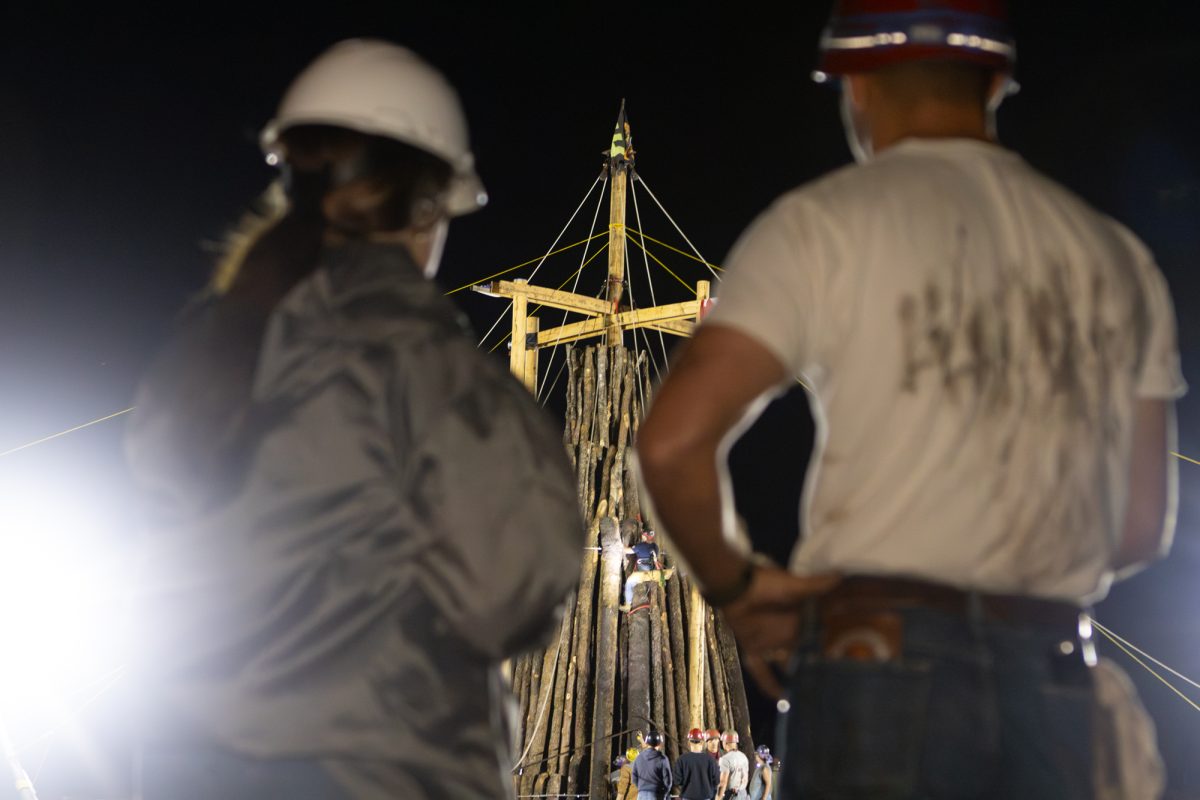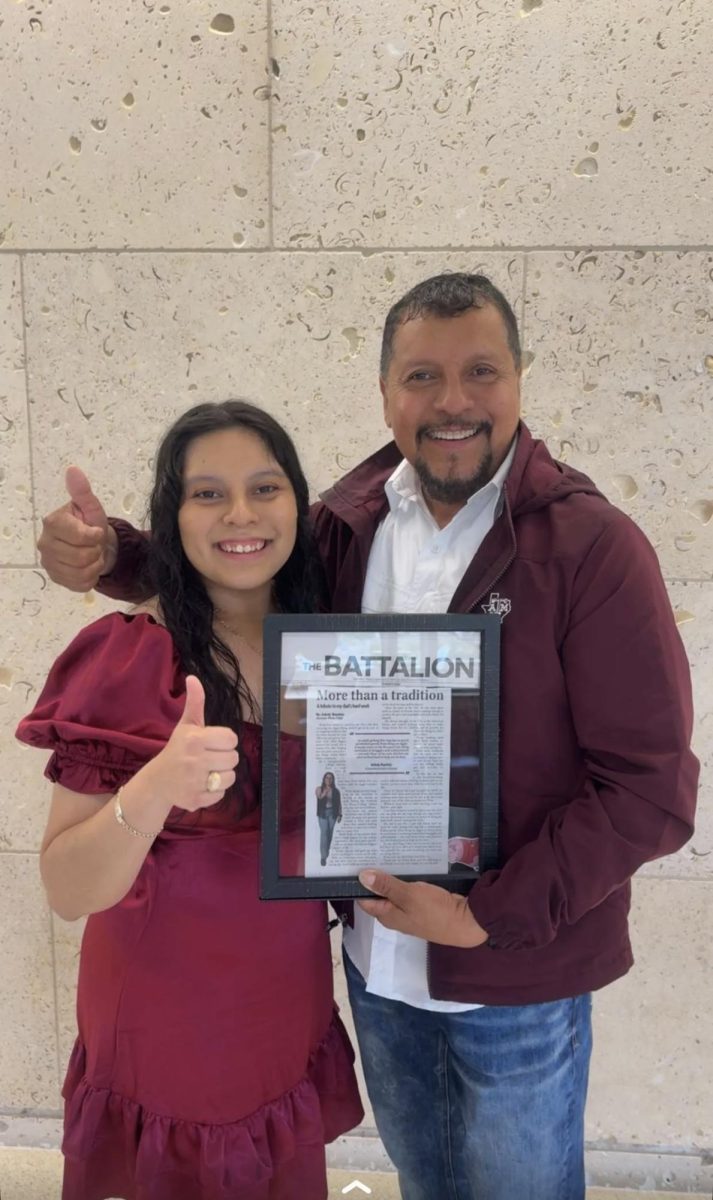The Bonfire Memorial stands as a monument to the 12 who died during the Bonfire collapse in the early hours of Nov. 18, 1999. Nineteen years after the collapse, the memory of this event is still preserved by the Aggie community.
The Bonfire Memorial was erected in remembrance of the tragic collapse and is arranged in three parts. The Tradition Plaza serves as the entrance to the memorial and reflects on Aggie traditions. The 89 stones in the History Walk represent the 90 years from the first on-campus bonfire in 1909 to the collapse, with a missing stone representing the 1963 assassination of President John F. Kennedy, after which the Bonfire was not lit. The Spirit Ring is composed of 12 portals, each pointing to the home town of the fallen Aggies, connected by 27 stones, one for each of the 27 people injured.
Communication instructional professor Nancy Street said she has taken students to tour the memorial as part of coursework relating to public memory. Street said the memorial can give students perspective on a tradition that is slowly fading from collective memory.
“I haven’t heard anything about it in the last year or two, but up until then, students will say ‘You have to bring bonfire back to campus,’” Street said. “I thought it’d be interesting for them to go see what it really was about, the good parts and the ones that were not so good.”
Street said the 1999 tragedy impacted her personally because her nephew’s roommate was found dead inside the collapsed stack. In the following days, the university’s atmosphere changed, and this is the sentiment Street said she is trying to pass on to her students.
“All I can tell you is the campus was just deadly quiet,” Street said. “Now people pop around and you see bikes zip around and there’s music. It was like people would stop and embrace and walk off. Part of it was just to say ‘Do you all know this happened right here on your campus?’”
Street said her students typically reacted in one of three ways. Some were deeply moved and even shed tears, others were respectful though they could not personally relate to the tragedy and others treated the monument as a playground.
“Was it my intent to make people weep? No,” Street said. “Was I offended that people ran and jumped and played? No. I think that you should probably act more mature. And then there were parts of me that thought ‘You know, the people that were killed that day probably wish they could jump around and play.’”
Brittany Tomlinson, Class of 2018, said she attended the memorial as part of Street’s fall 2015 class and the visit led her to join Traditions Council to help with the Bonfire Remembrance ceremony.
“It almost brings tears to my eyes to think of the first time I walked that gravel path, reading the light-hearted descriptions of those brave Ags that are no longer with us,” Tomlinson said. “It is part of our identity as Aggies. Everyone remembers when the stack fell.”
For animal science freshman Samuel Putz, who was born six days after the collapse, the tragedy is a memory that has been passed on to him.
Born into a family rooted in Aggie tradition, Putz said he often heard others talk about the deep impact the collapse had. But for him, the desire to be part of Bonfire remains.
“I don’t really know how I would feel about it if I was born before then,” Putz said. “But I just feel like it’s a tradition that’s gone on forever and it brings Aggies from all over the place and that’s something that I feel is important.”
Symbol of the enduring Aggie Spirit
November 16, 2018
Photo by Photo by Cassie Stricker
The Bonfire Memorial serves as a reminder of those who died in the Nov. 18, 1999 Bonfire collapse. The portals in the memorial each point toward the home towns of the 12 who died, and are connected by 27 stones for each of the 27 individuals who were injured.
0
Donate to The Battalion
$2790
$5000
Contributed
Our Goal
Your donation will support the student journalists of Texas A&M University - College Station. Your contribution will allow us to purchase equipment and cover our annual website hosting costs, in addition to paying freelance staffers for their work, travel costs for coverage and more!
More to Discover
















